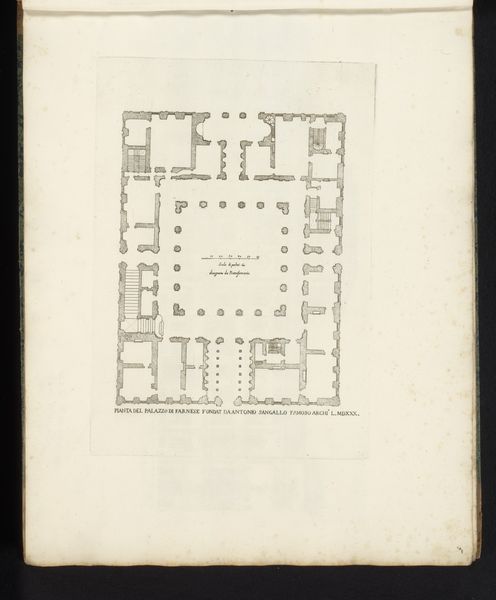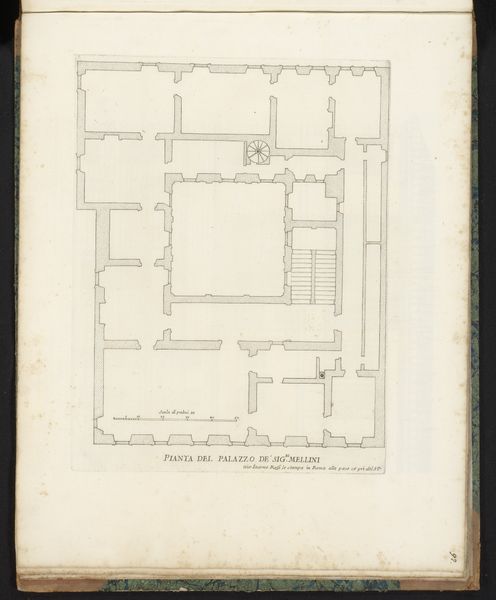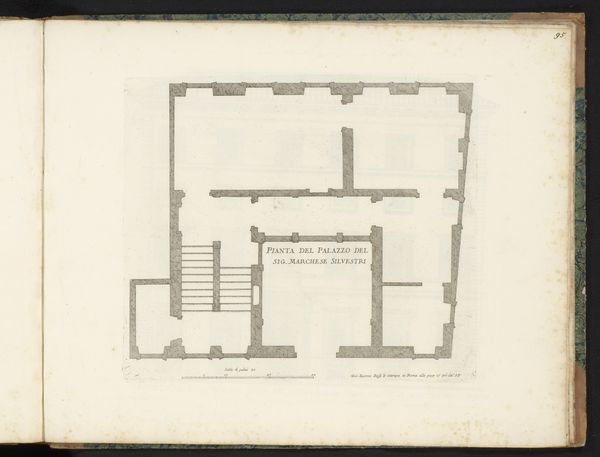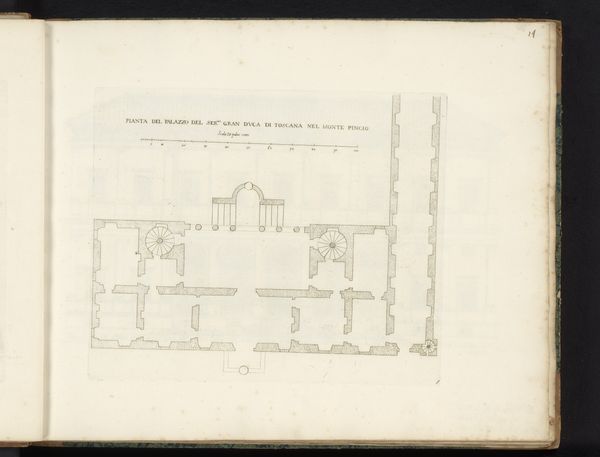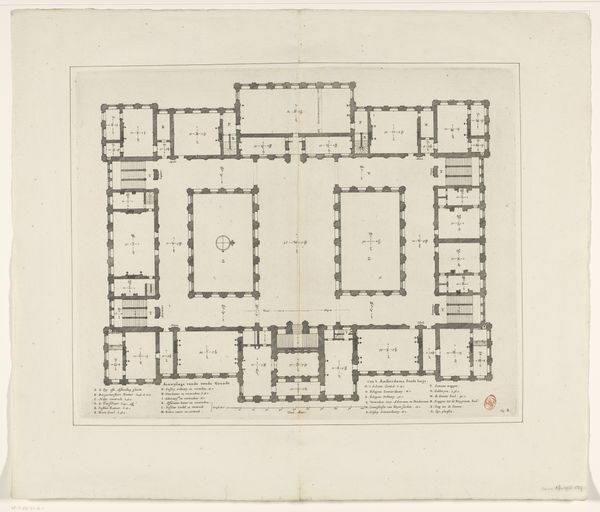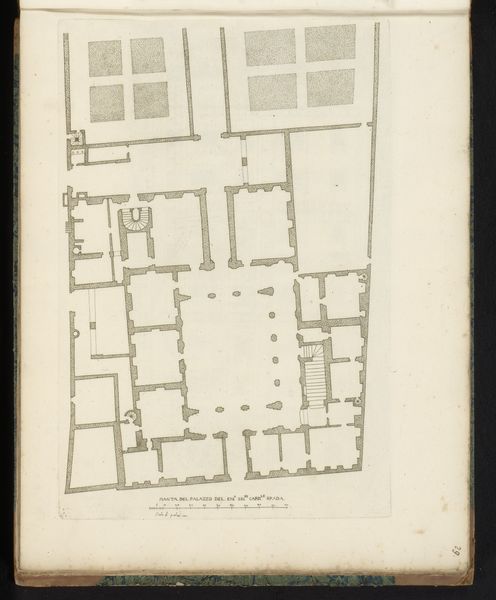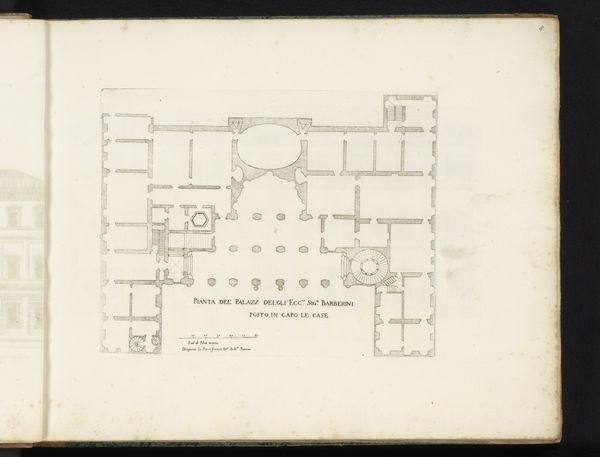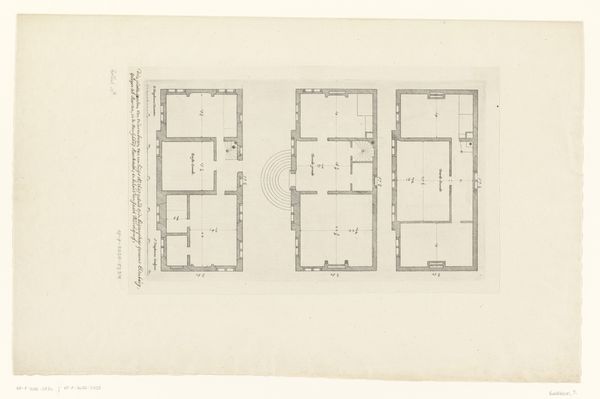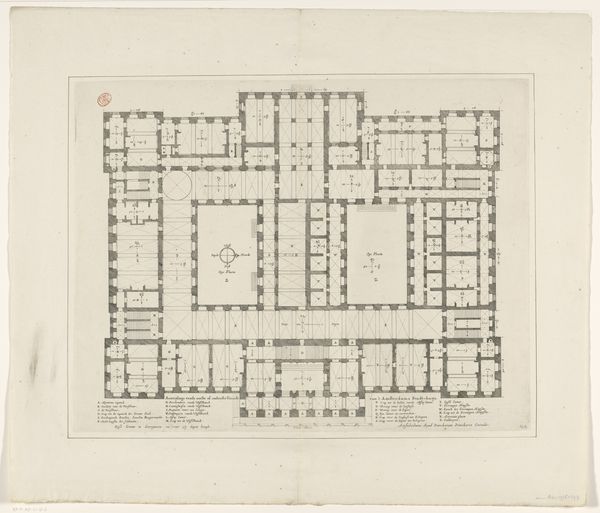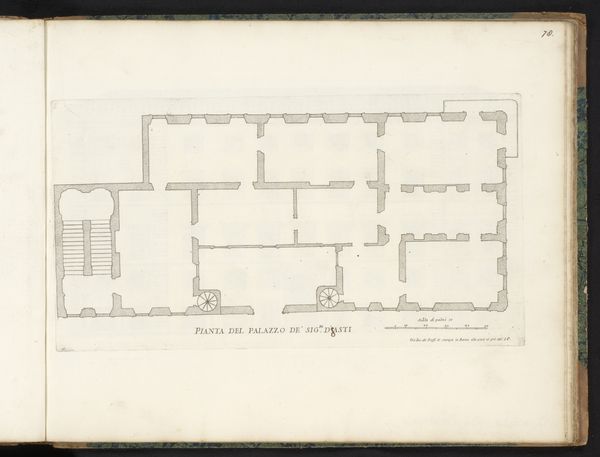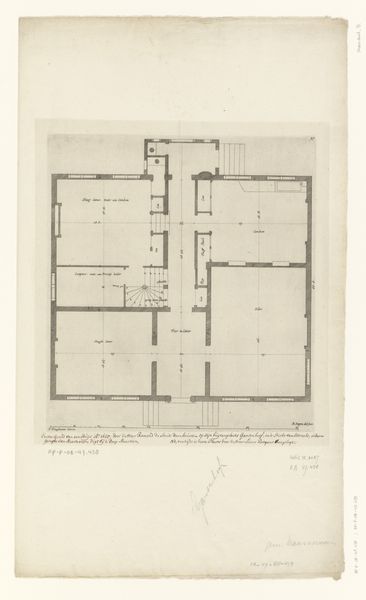
drawing, print, paper, ink, architecture
#
drawing
# print
#
paper
#
form
#
ink
#
geometric
#
geometric-abstraction
#
line
#
cityscape
#
history-painting
#
architecture
Dimensions: height 341 mm, width 233 mm
Copyright: Rijks Museum: Open Domain
Giovanni Battista Falda made this print, ‘Plattegrond van Palazzo Torlonia’, sometime in the 17th century, using the intaglio process. Intaglio involves incising an image into a surface, here a copper plate, which retains ink when the rest of the plate is wiped clean. This is then pressed onto paper, leaving a precise impression. You can see the incredible detail achieved by this method: the pattern of paving stones in the courtyard, the layout of the gardens, even the suggestion of a spiral staircase. Consider the amount of labour required to create such a detailed image, and how this relates to the labour involved in the construction and maintenance of the Palazzo itself. This print wasn’t just an artistic statement; it was a way of visualizing power, freezing a moment of architectural and social achievement. Looking at ‘Plattegrond van Palazzo Torlonia’ we can appreciate how the history of art is rooted in that of making, materials, and the social realities they represent.
Comments
No comments
Be the first to comment and join the conversation on the ultimate creative platform.
